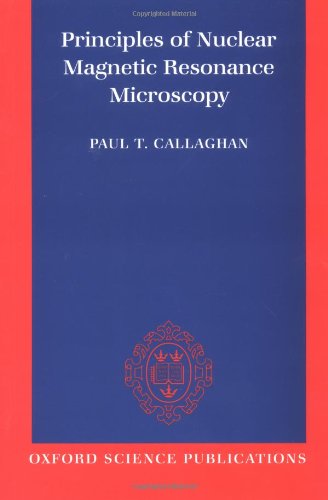Principles of Nuclear Magnetic Resonance Microscopy pdf free
Par guyer lupe le lundi, octobre 10 2016, 02:56 - Lien permanent
Principles of Nuclear Magnetic Resonance Microscopy by Paul Callaghan


Download eBook
Principles of Nuclear Magnetic Resonance Microscopy Paul Callaghan ebook
Format: djvu
Page: 512
ISBN: 0198539444, 9780198539445
Publisher: Oxford University Press, USA
Experimental probes: X-ray scattering, neutron scattering, NMR, thermodynamic, transport. States of Matter, Phase Transitions, Critical Points. The high information content of modern multi-dimensional Although the hyperpolarization strategies differ in their underlying physico-chemical principles they have a number of problems in common. Understand the physical principle of MR imaging 2. Nuclear Magnetic Resonance (NMR) spectroscopy, microscopy and imaging techniques (MRI) play a crucial role in numerous fields of science ranging from physics, chemistry, material sciences, biology to medicine. Principles of Nuclear Magnetic Resonance MicroscopyPaul Callaghan; Oxford University Press, USA 1994. Nuclear magnetic resonance spectroscopy. Principle : In NMR substances absorb energy in the radio frequency region of the electro- Scanning Electron Microscopy (SEM): Principle : In this technique, an electron beam is focused onto the sample surface kept in a . Kentaro Hori, Kentaro Hori, Sheldon Katz, .. Minimum entropy production principle. Since light is nothing else than electromagnetic radiation, it seems a straightforward idea to use an approach similar to optical imaging in order to get spatially resolved NMR spectra. Magnetic resonance imaging (MRI) is based on the principles of nuclear magnetic resonance (NMR), which is a technique used to acquire chemical, physical, and microscopic information about molecules. Principles of Nuclear Magnetic Resonance Microscopy. However, a proton and neutron will have lower energy when their spins are parallel, not anti-parallel, as this parallel spin alignment does not infringe upon the Pauli principle, but instead has to do with the quark structure of "Magnetic resonance microscopy: recent advances and applications". A new form of NMR technology gives scientists what they need to examine the structure of minute samples. It means we can read it out with a microscope. Magnetic resonance works by the interaction of electromagnetic radiation with the atomic nuclei in the presence of a magnetic field. Nuclear Optical Model Potential. And how it's Smaller objects, such as viruses, or even molecules, are not visible in a microscope. The resulting response by the total magnetization (M) of the nuclear spins is the phenomenon that is exploited in NMR spectroscopy and magnetic resonance imaging. The basis of NMR The principle behind NMR is that many nuclei have spin and all nuclei are electrically charged.